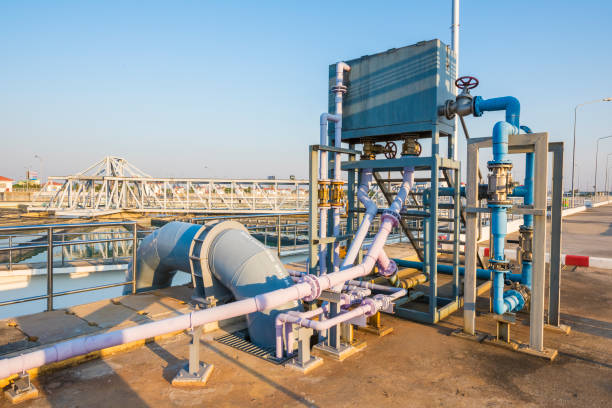July 06, 2022

A broad range of chemicals are available to treat water chemically. Below,
the various types of water treatment chemicals are summed up.
Algaecides
Algaecides are chemical compounds that kill algae as well as blue or green
algae when introduced into water. Examples are copper sulphate, iron salts,
rosinamine salts and benzalkonium chloride. Algaecides are effective against
algae, however they are not suitable for algal blooms for reasons of
environmental.
Algicides do not work in eliminating all algae. But, they do not remove any
toxins released by the algae before dying.
Antifoams
Foam is a mass of air bubbles produced when certain kinds of gas disperse in
a liquid. Foam is formed when dense liquid films are surrounded by
bubbles.
While the reason for foam is complicated in physical chemistry, we are aware
that its existence poses serious problems for both cooling tower water treatment chemicals as
well as the quality of the finished products. When it is not held to a minimum,
foam may affect the performance of equipment as well as make it more costly and
time-consuming of processes.
Antifoam blends contain oils combined with tiny amounts of silica. They
degrade foam thanks to two of silicone's properties which include
incompatibility with aqueous systems and ease of spreading. Antifoam compounds
are available either in the form of a powder or an emulsion of the primary
product.
Powder
Antifoam powder covers a group of products based on modified
polydimethylsiloxane. Although the basic characteristics of these products are
different, they provide an excellent antifoaming solution for a variety of
applications and conditions.
Antifoams are chemically inert, and do not react with the defoamed substance.
They don't cause odour, taste, or toxicity, and are not toxic. The only downside
of the powdery material is that it can't be used in watery solutions.
Coagulants
When referring to coagulants, positive high-valence ions are preferred. The
majority of the time, iron and aluminium are applied, aluminium as Al2(SO4)3-
(aluin) and iron as either FeCl3 or Fe2(SO4)3-. It is also possible to use
FeSO4, which is a relatively inexpensive version FeSO4, on condition that it
will be oxidised to Fe3+ after Aeration.
The dose of coagulants as well as the pH and concentration of the colloid are
all significant elements in the process of coagulation. As a co-flocculent,
Ca(OH)2 can be used to adjust the pH of the solution. Doses usually vary between
10 and 90 mg Fe3+/L, but when salts are present a higher dosage is
required.
Inhibitors of corrosion
Corrosion is the transformation of metals into soluble compounds. Corrosion
can cause failures of key parts of boiler systems. It can also cause the
deposition of corrosion products within critical heat exchange areas, and
overall efficiency loss.
This is why corrosion inhibitors are frequently used. Inhibitors are
chemicals which react with metal surfaces to offer protection. Inhibitors are
chemicals that adsorb onto metallic surfaces, thereby protecting it by forming a
layer.
pH conditioners
Municipal industrial water treatment chemicals is often pH-adjusted in order
to avoid corrosion from pipes and to prevent dissolution of lead into water
supplies. The treatment of water may require adjustments to pH. The pH is raised
or down by adding basic acids or bases. If it is the basic liquid, hydrogen
chloride serves as an example of ways to lower the pH. If the liquid is acidic
liquid the addition of sodium hydroxide may raise the pH.
The pH will be converted to around seven to seven and a half, after addition of specific concentrations of acids or basics. The pH change will affect the quantity of the substance that is added as well as the concentration of it.
Posted by: Technology Positive at
09:26 AM
| No Comments
| Add Comment
Post contains 613 words, total size 5 kb.
35 queries taking 0.0656 seconds, 61 records returned.
Powered by Minx 1.1.6c-pink.









